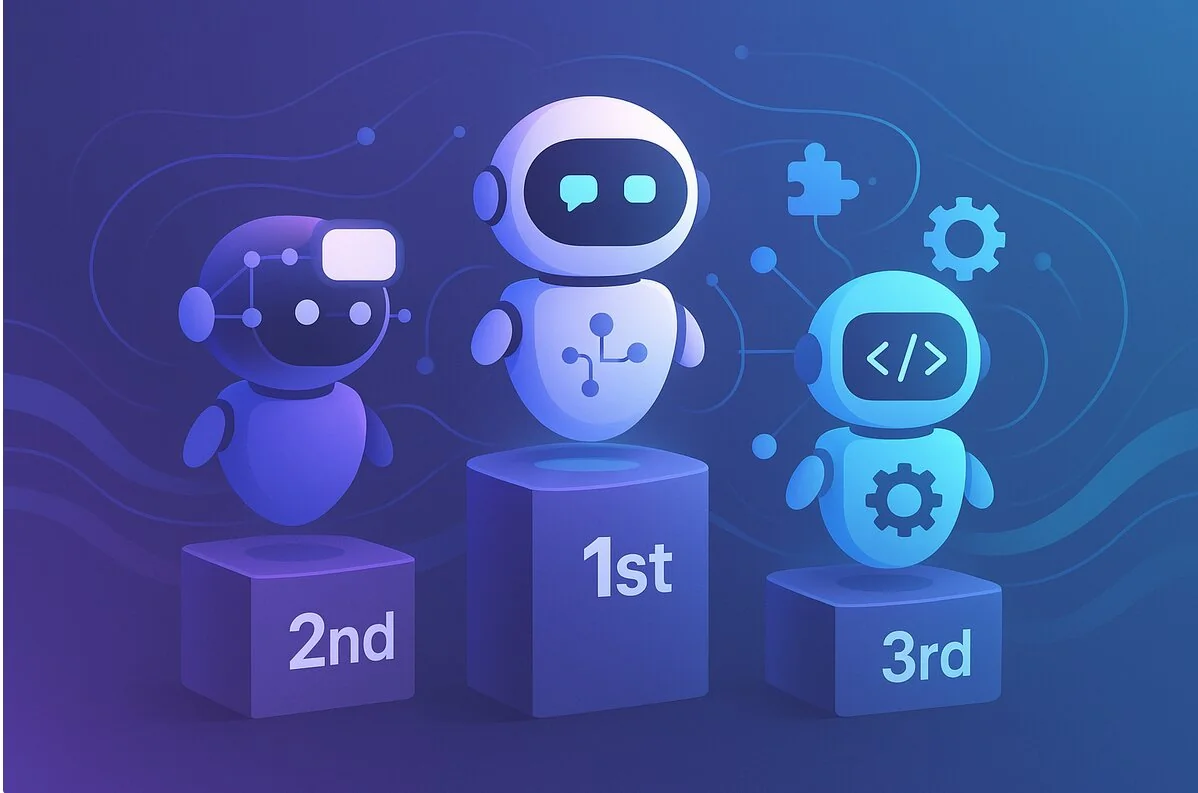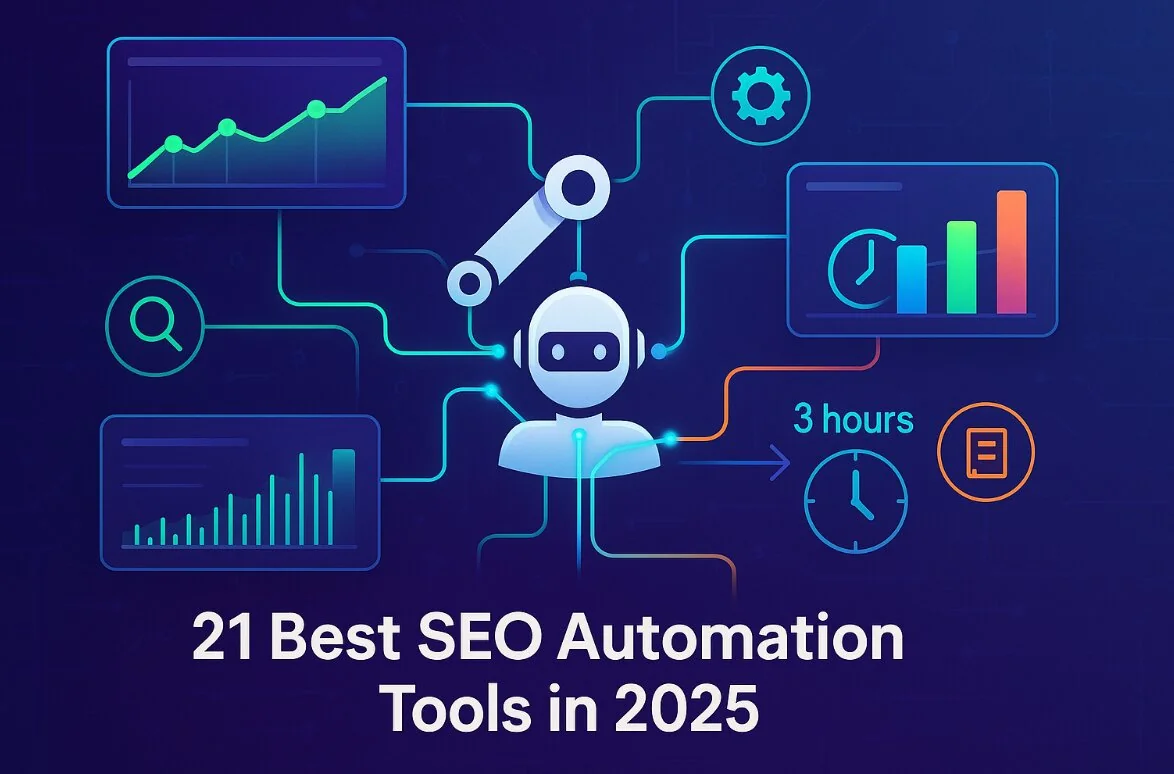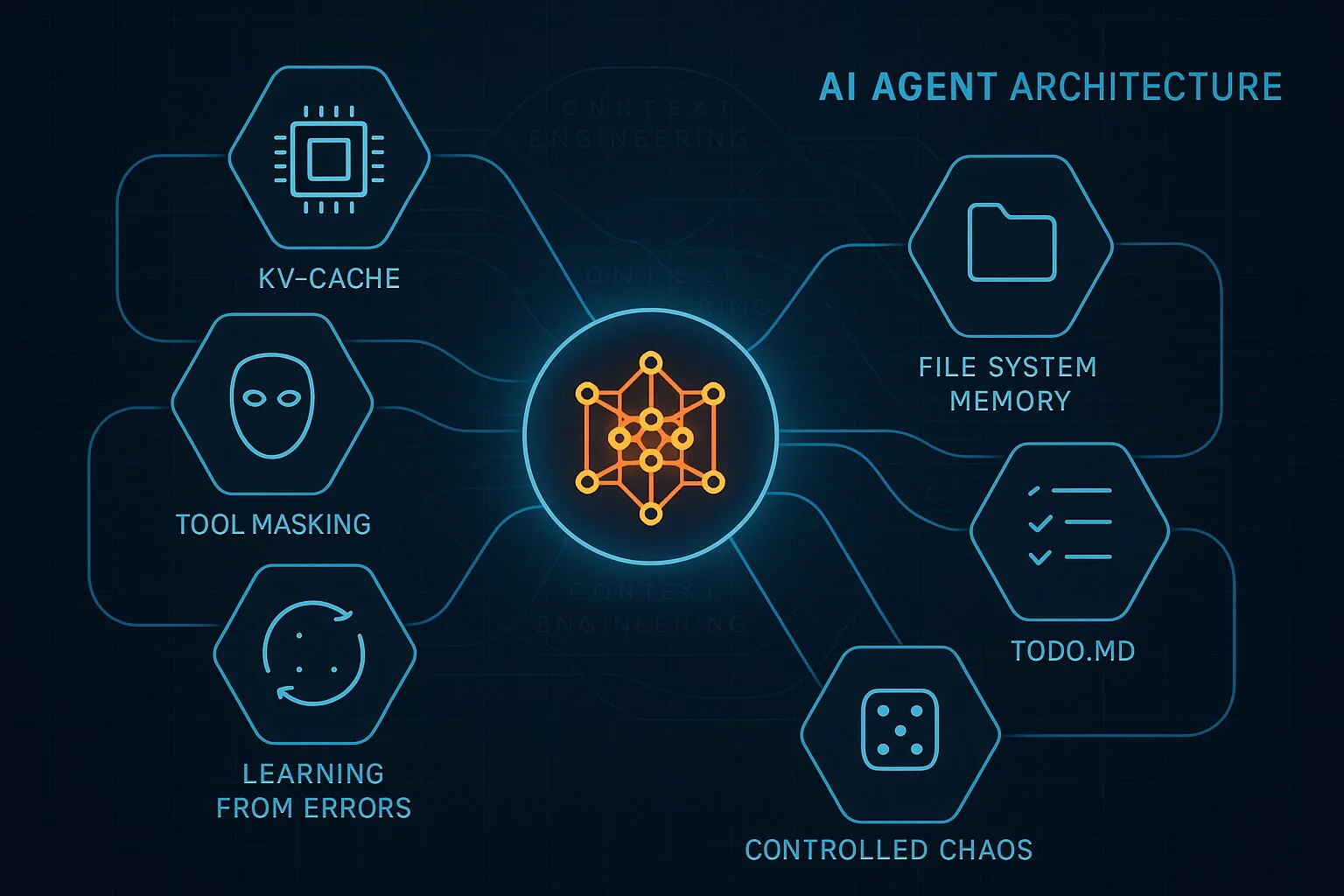Choosing the wrong no-code automation platform can cost you thousands of dollars and hundreds of hours. As someone who’s built solutions across all major platforms, I’ve learned that the ‘best’ tool isn’t about features—it’s about fit.
TL;DR
Key Takeaways:
- For the fastest AI agents, start with Relevance AI, but be ready for its pricing as you grow
- To connect thousands of apps in powerful workflows, Make.com is the undisputed leader
- For ultimate control and the lowest long-term cost, N8N is the champion, if you have the technical skills
After analyzing hundreds of automation projects and comparing the leading platforms, I’ve discovered that success in no-code automation hinges on one critical decision: choosing the platform that aligns with your specific needs, not the one with the most impressive feature list.
Understanding the No-Code Automation Landscape
The no-code automation space has evolved dramatically, splitting into two distinct camps: platforms optimized for AI agents and those built for traditional workflows. This fundamental division shapes everything from pricing to learning curves.
AI Agents vs AI Workflows: The Critical Distinction
Think of the difference like this:
- AI Workflows are like assembly lines: sequential, predictable, and rule-based. They excel at tasks like, “When a new email arrives, extract the data and update a spreadsheet.”
- AI Agents are like digital employees: they can make decisions, engage in conversations, and adapt to unexpected scenarios.
This distinction isn’t academic—it’s practical. If you’re automating customer support, you need an AI agent that can understand context and provide nuanced responses. If you’re syncing data between systems, a workflow tool will be more efficient and cost-effective. Understanding this difference will save you from the costly mistake of using a sledgehammer to crack a nut.
The Ease-Power Trade-off
Here’s the trade-off: the easier a platform is to use, the less flexible it becomes. Relevance AI gets you from zero to a deployed AI agent in minutes, but you’ll hit walls when you need complex conditional logic. N8N offers unlimited flexibility with its code options and self-hosting, but prepare for a steeper learning curve.
This trade-off isn’t a bug—it’s a feature. Platforms optimize for their target users. The key is knowing where you fall on the spectrum and choosing accordingly.
Platform Deep Dive
Relevance AI: The AI Agent Powerhouse
Relevance AI has positioned itself as the go-to platform for businesses that need AI agents yesterday. Its standout features include instant front-end deployment (embed agents on your website with a single line of code), human-in-the-loop capabilities for quality control, and sophisticated multi-agent systems that can collaborate on complex tasks.
Key Features Deep Dive:
| Feature | Description | Best For |
|---|---|---|
| Agent Builder | Visual flow designer with drag-and-drop interface | Non-technical users |
| Tool Library | Pre-built tools for web scraping, data analysis, API calls | Rapid prototyping |
| Multi-Agent Systems | Agents can delegate tasks to other specialized agents | Complex workflows |
| Knowledge Base | Vector database for agent memory and context | Customer support |
| Conversation Designer | Template-based dialogue management | Structured interactions |
| Analytics Dashboard | Real-time usage metrics and conversation logs | Performance monitoring |
The platform shines when you need to build conversational AI quickly. One user reported deploying a customer service agent that handled 80% of inquiries within just three days of signing up. The visual flow builder makes it intuitive to design agent behaviors, and the tool referencing system allows agents to interact with external services seamlessly.
Relevance AI Strengths:
- Fastest Time to Production: Deploy functional agents in hours, not weeks
- No Infrastructure Management: Fully managed service with automatic scaling
- Built-in NLP: Advanced language understanding without external services
- Agent Marketplace: Share and monetize your agents with other users
However, this focus comes with limitations. With a smaller number of native integrations compared to competitors' thousands (though it can connect to any API), you’ll often need to rely on webhooks and custom API calls. More critically, costs can spiral at high volumes—what starts as a $19/month experiment can become a $5,000+/month burden if your agent goes viral.
Make.com: The Integration Champion
Make.com (formerly Integromat) remains the undisputed king of integrations with over 2,000 native connections. This isn’t just a numbers game—each integration is thoughtfully designed with pre-built actions that handle common use cases out of the box.
Integration Categories:
| Category | Example Services | Use Cases |
|---|---|---|
| CRM & Sales | Salesforce, HubSpot, Pipedrive | Lead management, Deal tracking |
| Marketing | Mailchimp, ActiveCampaign, Facebook Ads | Campaign automation, Analytics |
| E-commerce | Shopify, WooCommerce, Stripe | Order processing, Inventory sync |
| Productivity | Google Workspace, Notion, Airtable | Document automation, Database sync |
| Communication | Slack, Discord, Twilio | Notifications, SMS automation |
| Developer Tools | GitHub, Jira, Webhooks | CI/CD automation, Issue tracking |
The platform’s strength lies in its visual workflow builder that makes complex automations surprisingly intuitive. Features like error handling, data transformation tools, and granular scheduling options put professional-grade capabilities in the hands of non-technical users.
Make.com Advanced Features:
| Feature | Capability | Impact |
|---|---|---|
| Data Store | Built-in database for workflow data | Eliminates need for external database |
| Router | Split workflows based on conditions | Complex branching logic |
| Iterator | Process arrays and lists | Bulk operations |
| Aggregator | Combine multiple bundles | Data consolidation |
| Error Handler | Custom error recovery paths | 99.9% uptime workflows |
| Scenario Templates | 1000+ pre-built workflows | 80% faster deployment |
One e-commerce owner used Make.com to build a workflow that automatically processes orders, updates inventory across five platforms, generates shipping labels, and sends personalized emails—all without writing a single line of code. The workflow handles 10,000+ orders monthly with zero manual intervention.
The absence of native AI agent capabilities is Make.com’s Achilles' heel. While you can integrate with AI services like OpenAI, you’re essentially duct-taping solutions together rather than having purpose-built agent features. For pure workflow automation, it’s unmatched. For AI agents, look elsewhere.
N8N: The Technical Swiss Army Knife
N8N occupies a unique position—it’s the platform for users who want no-code convenience with yes-code flexibility. Its open-source nature and self-hosting option make it the darling of technical teams who need complete control over their automation infrastructure.
N8N Deployment Options:
| Deployment Type | Best For | Monthly Cost | Technical Skill Required |
|---|---|---|---|
| N8N Cloud | Quick start, No maintenance | $20-500 | Low |
| Docker | Single server deployment | $5-50 (hosting) | Medium |
| Kubernetes | High availability | $50-500 (infrastructure) | High |
| Desktop App | Local development | Free | Low |
Technical Capabilities:
| Feature | Description | Advantage |
|---|---|---|
| Custom Functions | JavaScript/Python code nodes | Unlimited flexibility |
| Sub-workflows | Reusable workflow components | DRY principle |
| Environment Variables | Secure credential management | Production-ready |
| Git Sync | Version control integration | Team collaboration |
| Custom Nodes | Build your own integrations | Extensibility |
| Queue Management | Advanced execution control | Enterprise-grade |
The platform supports both AI workflows and agents, making it the most versatile option. Advanced features like multiple trigger support, custom code nodes, and sub-workflows enable automation architectures that would be impossible on other platforms.
Real-World N8N Use Cases:
| Industry | Use Case | Technical Components |
|---|---|---|
| FinTech | Fraud detection pipeline | ML models, Real-time triggers, Database sync |
| Healthcare | Patient data processing | HIPAA compliance, Encryption, Audit logs |
| Media | Content syndication | Web scraping, AI processing, Multi-channel publishing |
| SaaS | Customer onboarding | API orchestration, Email sequences, CRM updates |
One startup used N8N to build a complex content generation system that monitors competitor websites, analyzes trends with AI, generates articles, and publishes across multiple channels—all running on their own servers for pennies per execution. Their setup processes 50,000+ articles monthly at a total infrastructure cost of $200.
The trade-off is complexity. While N8N has improved its user interface significantly, it still assumes a level of technical comfort that can intimidate pure business users. Documentation, while comprehensive, often reads like it was written by developers for developers.
Head-to-Head Comparison
Key Differences at a Glance
| Feature | Relevance AI | Make.com | N8N |
|---|---|---|---|
| Native Integrations | 100+ (API focused) | 2,500+ | 400+ |
| AI Agent Support | ✅ Native | ❌ Via integrations | ✅ Built-in |
| Starting Price | $19/mo | $20/mo | $20/mo (Free self-hosted) |
| Best Use Case | Conversational AI | Workflow automation | Technical flexibility |
| Learning Curve | Easy | Moderate | Steep |
| Scalability Cost | Expensive | Moderate | Cheapest |
Real Cost Analysis
The advertised prices tell only part of the story. Here’s what you’ll actually pay at different usage levels:
| Volume Tier | Operations/Month | Relevance AI | Make.com | N8N (Cloud) | N8N (Self-Hosted) |
|---|---|---|---|---|---|
| Starter | < 1,000 | $19/mo | $20/mo | $20/mo | Free |
| Growth | 10,000 | $199/mo | $50/mo | $50/mo | ~$5/mo |
| Scale | 100,000 | $599/mo | $200/mo | $150/mo | ~$50/mo |
| Enterprise | 1,000,000+ | Contact Sales | $500/mo | $500/mo | ~$200/mo |
Additional Cost Considerations:
| Cost Factor | Relevance AI | Make.com | N8N |
|---|---|---|---|
| Base Plan Includes | 8 AI steps/workflow | 10,000 operations | 5,000 executions |
| Overage Charges | $0.50 per 1,000 steps | $0.02 per operation | $0.02 per execution |
| Team Seats | $25/user/month | Included in plan | $20/user/month |
| Priority Support | $100/month | Included | $50/month |
| Custom Domain | Included | Enterprise only | Self-hosted only |
| API Rate Limits | 100 req/min | 1000 req/min | Unlimited (self) |
The cost differential at scale is striking. If you’re planning for growth, factor this into your platform decision. Note that Relevance AI’s costs can escalate quickly with AI-heavy operations, while Make.com and N8N maintain more predictable pricing.
Making the Right Choice
Which Platform for Your Use Case?
Choose Relevance AI for:
- Customer support chatbots
- Lead qualification bots
- AI-powered help desks
- Quick MVP deployments
Choose Make.com for:
- E-commerce automation
- Marketing workflows
- CRM synchronization
- Social media management
Choose N8N for:
- Data pipelines
- Complex integrations
- Custom internal tools
- High-volume processing
Decision Framework
Use this framework to guide your platform selection:
Choose Relevance AI if:
- You need AI agents with conversational abilities
- Speed of deployment is critical
- You want to embed agents on websites quickly
- Volume will remain moderate
- Integration needs are basic
- Budget allows for premium pricing at scale
Choose Make.com if:
- You’re focused on workflow automation
- You need extensive third-party integrations
- Cost-efficiency at scale matters
- You prefer visual building over coding
- AI agents aren’t a priority
- You want enterprise support included
Choose N8N if:
- You want maximum flexibility and control
- You’re comfortable with technical concepts
- You need both AI agents and workflows
- Self-hosting appeals to you
- Long-term cost optimization is important
- Compliance requires on-premise deployment
Common Pitfalls to Avoid
- Platform FOMO: Resist using multiple platforms at once. Master one before adding another.
- Overengineering: Just because a platform can do everything doesn’t mean your solution should. Start simple and iterate.
- Ignoring Scale Costs: That $19/month test agent might cost $2,000/month in production. Model your costs at scale.
- Choosing on Features Alone: The best platform for you depends on your team’s skills, integration needs, and growth trajectory—not just the feature list.
Getting Started: Your 30-Day Action Plan
Week 1: Foundation
- Choose your platform using the decision framework
- Complete the official quick start guide
- Build your first 3 simple automations
Week 2: Real Implementation
- Map your manual processes and prioritize top 3
- Build your #1 priority automation with error handling
- Document everything for future reference
Week 3: Scaling Up
- Create complex multi-step workflows
- Integrate multiple services together
- Add monitoring and performance optimization
Week 4: Mastery
- Explore platform-specific advanced features
- Calculate ROI and plan next automations
- Create your quarterly automation roadmap
Quick Reference Guide
Platform Comparison at a Glance
| Criteria | Relevance AI | Make.com | N8N |
|---|---|---|---|
| Best For | AI Agents | Workflow Automation | Technical Teams |
| Starting Price | $19/mo | $20/mo | $20/mo (Free self-hosted) |
| Time to First Automation | 1 hour | 2 hours | 4 hours |
| Learning Resources | Good | Excellent | Good |
| Community Size | Growing | Large | Medium |
| Enterprise Ready | Yes | Yes | Yes |
| SOC2 Compliant | Yes | Yes | Self-hosted option |
| GDPR Compliant | Yes | Yes | Yes |
| Support Response Time | 24-48h | 12-24h | 24-48h (Community) |
Quick Decision Framework
Answer these 3 questions:
-
Do you need AI agents or just workflows?
- AI Agents → Relevance AI or N8N
- Workflows → Make.com or N8N
-
What’s your technical skill level?
- Non-technical → Relevance AI
- Some technical → Make.com
- Developer-friendly → N8N
-
What’s your monthly automation volume?
- < 10,000 operations → Any platform
- 10,000-100,000 → Make.com or N8N
-
100,000 → N8N (self-hosted)
Conclusion
The no-code automation platform landscape isn’t about finding the “best” tool—it’s about finding the right tool for your specific needs. Relevance AI excels at AI agents, Make.com dominates integrations, and N8N offers unmatched flexibility.
Remember: the platform you choose matters far less than your commitment to building and iterating. Start with one platform, master its capabilities, and expand only when you hit genuine limitations. The most successful automation implementations come from teams that chose a platform aligned with their needs and stuck with it long enough to realize its full potential.
Your next step? Pick a platform based on your primary use case—AI agents or workflows—and commit to building something this week. The perfect platform doesn’t exist, but the perfect platform for your needs does. Choose wisely, build consistently, and automate relentlessly.
Frequently Asked Questions
AI workflows are sequential and rule-based, like assembly lines that execute predefined steps (e.g., ‘when email arrives, update spreadsheet’). AI agents are like digital employees that can make decisions, hold conversations, and adapt to unexpected scenarios. Workflows are best for predictable processes, while agents excel at tasks requiring judgment and context understanding.
N8N (self-hosted) is the most cost-effective for high volumes, costing around $200/month for 1M+ operations compared to $500-600/month on other platforms. Make.com offers good middle-ground pricing at $200/month for 100K operations. Relevance AI becomes expensive at scale, reaching $599/month for 100K operations due to AI-heavy processing costs.
Yes, but it’s not recommended initially. Master one platform before adding another to avoid overengineering and increased complexity. Some teams use Relevance AI for customer-facing AI agents while using Make.com or N8N for backend workflows, connecting them via webhooks or APIs. However, this approach requires more technical expertise and maintenance.
Relevance AI offers the fastest start with functional AI agents deployable in 1-2 hours. Make.com typically takes 2-3 hours to build your first meaningful workflow. N8N requires 4+ hours for initial setup, especially if self-hosting. Plan for 30 days to reach proficiency with any platform - Week 1 for basics, Week 2 for real implementations, Week 3 for complex workflows, and Week 4 for optimization.
Switching platforms requires exporting your data (a few hours), learning the new interface (days to weeks), and recreating workflows from scratch since automation logic isn’t portable between platforms. The biggest challenge is rebuilding complex automations and retraining your team. This is why choosing the right platform initially is crucial - switching costs increase significantly as your automation complexity grows.
Relevance AI requires minimal technical skills - if you can use drag-and-drop interfaces, you can build AI agents. Make.com needs some technical understanding for complex workflows but remains accessible to non-developers. N8N requires the most technical knowledge, especially for self-hosting, debugging, and using code nodes effectively. All platforms offer visual builders, but N8N assumes comfort with technical concepts like APIs, webhooks, and basic scripting.



